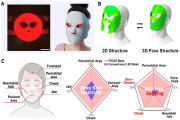According to the South Korean media outlet TheElec, Samsung and Japan-based Ulvac have entered into negotiation for the price of the Gen 8.5 OLED deposition equipment they are currently working on. Ulvac proposed a quote of 800 billion won per unit for the new machine, but Samsung wanted to halve the price to 400 billion won.
From Ulvac’s perspective, the price of Gen 8.5 vertical deposition equipment—which comes with full-cut substrates—should be 40%–60% higher than that of an existing deposition machine as developing and manufacturing a new device tends to be more costly, resulting in an estimate of 700 to 800 billion won per unit.
However, Samsung, by saying that the equipment has yet to be developed, was willing to pay merely 400 billion won and emphasized that it is the only supplier who can buy the machine. This negotiation demonstrated Samsung’s willingness to pay for the expansion of its Gen 8.5 OLED capacity.
A Gen 8.5 substrate is bigger than its Gen 6 counterpart (mostly used for smartphones), which is conducive to higher efficiency and productivity of large OLED panels such as those for tablets and notebooks. Samsung plans to make the final decision on whether to continue investing in Gen 8.5 OLED production in August, but to continue the project, it must be approved by the company’s Business Support Task Force as well.
Once approved, the South Korean conglomerate is likely to place orders later this year or in early 2023. At that time, it will be able to produce 15,000 Gen 8.5 substrates per month and add another 15,000 substrates when necessary.
Moreover, Ulvac’s vertical deposition machine is the first of its kind, indicating the risk of delivery delay. Therefore, Samsung also partnered with another Japanese business Canon Tokki to develop a Gen 8.5 half-cut machine based on horizontal material deposition.
Apple’s first OLED iPads have two size options, namely the 11" and 12.9" models. The 11" model will be developed by Samsung and LG, while the 12.9" model will be solely developed by LG. Presently, both Samsung and LG plan to adopt their Gen 6 OLED production lines for the iPad panels. Meanwhile, the two panel makers are developing Gen 8.5 production technologies. If Samsung’s Gen 8.5 project can move forward, it will be able to establish a production line scheduled to be launched in 2024.





 CN
TW
EN
CN
TW
EN





